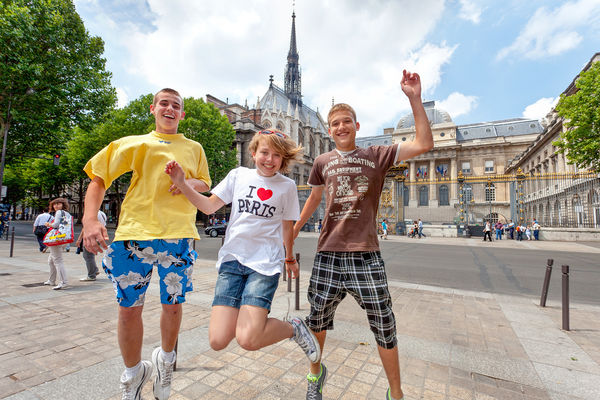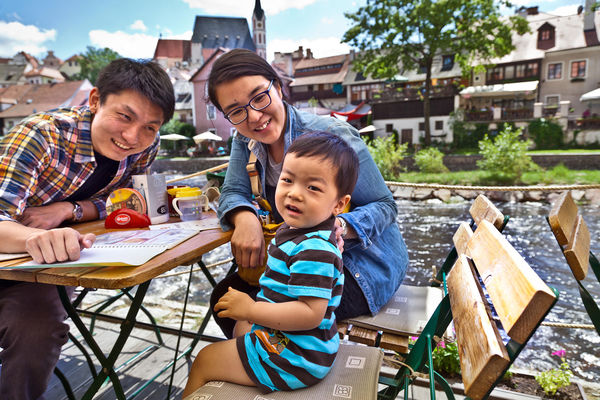Make the Most of Taking Your Kids to Europe


By Rick Steves
Taking your kids along on an international trip is an investment. To get the most out of your money, time, and energy, make the trip as meaningful as possible for them. Involve them in planning, and they'll feel less like they're tagging along, and more like you're all on an adventure together. Once you know where you're going, light up their imagination (and yours) with books and movies that'll bring those places alive before you've even left. And when you get there, think about how to keep their experience from feeling like an overwhelming blur.
The key to a successful European family vacation is to slow down and temper expectations. Don't overdo it. Tackle one or two key sights each day, mix in a healthy dose of pure fun, and build in extended breaks.
With some forethought and a relaxed approach, you'll take home happy memories to share for a lifetime.
Prepping Your Kids
Before you leave home, get your kids enthusiastic about what they'll be seeing in Europe. Encourage them to learn about the countries, cities, sights, and people they'll be visiting. Look online for articles, photos, podcasts, and videos to pique their curiosity.
Read books, both fiction and nonfiction, set in the place you're going, such as The Diary of a Young Girl by Anne Frank for Amsterdam, The Thief Lord for Venice, or All the Light We Cannot See, about a French girl and German boy during World War II. For younger kids, check out M. Sasek's delightfully illustrated This Is series on various European destinations (This is Venice, This is Edinburgh, and so on). Watch movies, such as Paddington and Paddington 2 for London, Brave for Scotland, Ratatouille or Hugo for Paris, The Secret of Roan Inish for Ireland, and Frozen for Scandinavia. (Don't forget the classics, like The Sound of Music for Salzburg.) Your hometown library can be a great resource for age-appropriate books and movies. Little Passports offers suitcase-shaped boxes with maps, games, and activities designed to spark children's interest in going abroad (subscribe for about $25 a month).
Consider watching some episodes of my TV series, Rick Steves' Europe, for a fun sneak peek into the destinations you'll be visiting (all episodes are available for free on this site). To zero in on specific subjects, check out Classroom Europe, my searchable database of short video clips on European history, art, culture, and geography.
Get a jump on foreign phrases. Type out the top 20 or so and put them on the fridge for everyone to learn. Get the 10 Minutes a Day language book for your destination, which comes with sticky word labels that your kids will enjoy plastering around the house. My phrasebooks are also accessible and fun to use. Kids might especially enjoy language-learning game apps like Duolingo.
Try to relate your children's activities or favorite games to the places you're visiting (turn on Spanish subtitles for Netflix, draw pictures of the Eiffel Tower, play dominoes while saying the numbers in Italian). Give your kids the chance to try out foreign specialties in advance by eating at international restaurants, or download some recipes and make meals together at home. Many US cities host celebrations of different cultures — look for festivals held by local communities of Greeks, Italians, Hungarians, or whatever group might be vibrant in your town or relevant to your travels.
Reflecting and Connecting
Once your trip is underway, help your kids collect and process their observations. Buy a journal at your first stop; it will become a fun souvenir in itself. Kids like cool books — pay for a nice one. The journal is important, and it should feel that way. Encourage kids to record more than just a trip log: Collect feelings, smells, tastes, reactions to cultural differences, and so on. Allow time to sit still and sketch a favorite view. Grade-school kids enjoy pasting in ticket stubs (bring a glue stick) or drawing pictures of things they've seen.
It can be hard for kids to hang around grown-ups all day, so help them connect with other children. In hot climates, kids gravitate toward the squares (in cities and villages alike) when the temperature begins to cool in the late afternoon, often staying until late in the evening. Take your children to the European nightspots to observe — if not actually make — the scene (such as the rollerbladers at the Trocadéro in Paris or the crowd at Rome's Trevi Fountain).
Just a few phrases spoken by your kids will open many doors. Make a point of teaching them "thank you," "hello," and "goodbye" in the country's language. You'll find nearly everyone speaks English, but small phrases out of the mouths of babes will melt the cool of surly museum guards or harried shop clerks.
During the trip, your kids may complain about being parted from their friends or having to visit yet another museum. But don't lose heart — sometimes the payoff comes years down the road. Your child may surprise you one day by mentioning a painting in Madrid's Prado or recalling a fact about Rome's Colosseum. Besides building memories, your investment in a trip now is a down payment on developing a true citizen of the world.

